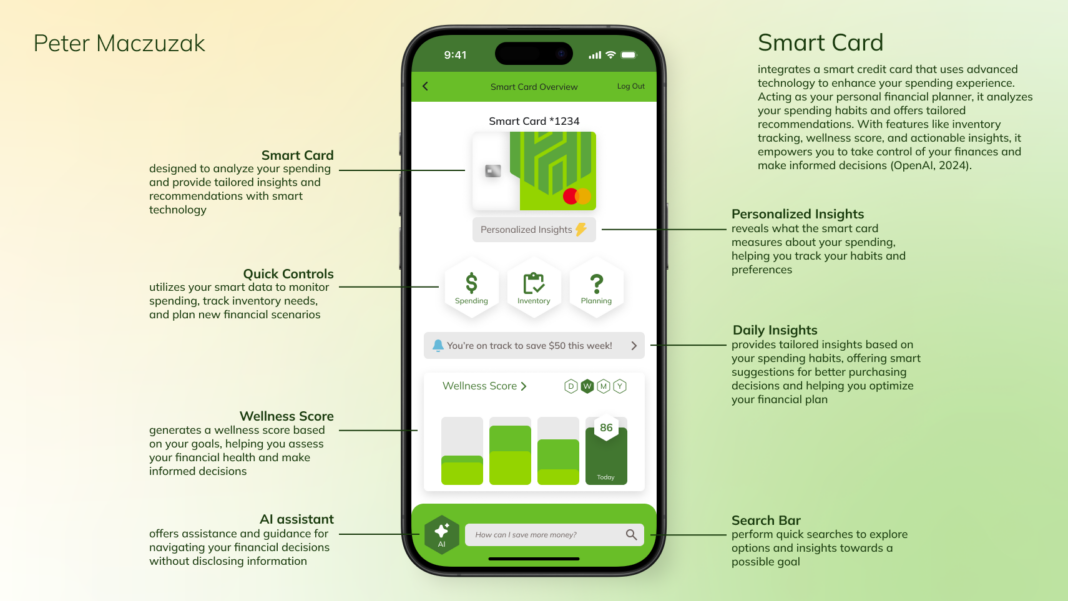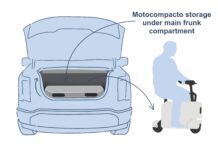“When smart mirrors read your skin tone, provide recommendations and can order makeup and skincare products, the physical mirror is no longer the product that we own. The physical mirror is merely a gateway into a far larger service that transcends beyond its original function” (Elnaj, 2020). Smart tech has the intention of enhancing functionality, but at what point does it overextend its hand? The credit card would be a balanced place to infuse tech as it is already one of our more guarded possessions, and its data can provide more clarity in our spending habits.

What if our credit card could analyze what we do daily and visualize what we don’t see as the bigger picture? What if that’s just helping us save $5 one week? Could it break down receipts from past grocery stores to become your personal shopper, tracking your inventory, and alerting you when you’ll need to go again based on intervals between previous trips?
That’s what I set out to do with this concept, and my visual is the app that enables all this information to be taken in and viewed. To encourage self-growth over time, I thought of implementing a wellness score but I don’t want to quantify something so complex and have some people feel inadequate because of a scoring system. How can I take this fundamental idea of supporting personal progress, while encouraging it as something they’ve accomplished already?
Instead of a smart card, there was also the idea of developing a watch that does tap pay and can also scan items at the grocery store to tell you how they’d impact your diet or go with the ingredients you have. Could it even add items to your cart to make checkout easier?
References
Elnaj, S. (2020, February 25). The Rise Of The Interconnected Mega-Platform. Forbes. https://www.forbes.com/councils/forbestechcouncil/2020/02/25/the-rise-of-the-interconnected-mega-platform/
OpenAI. (2024). ChatGPT (Sept 2024 version) [Large language model]. https://chat.openai.com/chat




